12 Critical Things to Avoid After Rhinoplasty Surgery
After rhinoplasty, your nose is remarkably fragile. The bone and cartilage structures have been carefully reshaped, and they need time to heal properly. But here’s the thing—most complications during rhinoplasty recovery aren’t due to surgical issues. They’re caused by patients unknowingly doing things avoid after rhinoplasty surgery.
Sarah was thrilled with her new nose—until she accidentally bumped it while reaching for her phone three days post-surgery. That one moment of carelessness set her rhinoplasty recovery back by weeks. It’s a story I’ve heard too many times in clinical practice, and it’s entirely preventable.
Whether you’re planning a nose job or you’ve just had one, understanding what to avoid after rhinoplasty is just as important as following what you should do. This guide walks you through the critical mistakes that can compromise your results, based on both clinical observations and patient experiences.
Quick Answer: What Should You Avoid After Rhinoplasty?
After rhinoplasty surgery, avoid touching or bumping your nose, wearing glasses, strenuous exercise, blowing your nose, sleeping flat, smoking, drinking alcohol, sun exposure, hot showers, swimming, and pulling clothing over your head. These activities can cause swelling, bleeding, infection, or damage to your surgical results during the critical healing period.
Don’t Touch, Bump, or Put Pressure on Your Nose
This might sound obvious, but you’d be surprised how often people forget. Your nose after rhinoplasty is essentially a delicate construction site. The bones have been fractured and repositioned, cartilage has been reshaped, and everything is held together by internal sutures and the body’s natural healing process.
Even minor trauma can shift these structures. I’ve seen patients who accidentally rolled over onto their nose while sleeping or got bumped by a pet or child. The results? Asymmetry, prolonged swelling, or in severe cases, the need for revision surgery.
Pro Tip: Set up a “buffer zone” around yourself for at least the first two weeks. Keep pets off the bed, warn family members to be cautious around you, and consider sleeping in a separate room if you have a restless partner. These precautions might seem excessive, but they’re worth it to protect your investment.
Things to Avoid After Rhinoplasty: Why This Matters for Your Rhinoplasty Results
During the first few weeks following nose surgery, the nasal bones haven’t fully set. Think of it like wet clay that’s drying—it maintains its shape, but it’s still moldable. Any pressure or impact can alter the surgeon’s work. Most surgeons recommend avoiding any contact with your nose for at least 6-8 weeks, though the most critical period is the first two weeks.
Skip the Glasses (Including Sunglasses)
Here’s where things get interesting. Glasses—even lightweight ones—place constant pressure on the nasal bridge. After rhinoplasty, this pressure can create indentations, cause uneven healing, or even shift the nasal bones before they’ve properly set.
Many patients don’t realize that even the lightest frames exert several grams of pressure on the nose. Over days and weeks, this continuous pressure can gradually reshape your surgical results in ways you definitely don’t want.
Important: Most rhinoplasty surgeons recommend avoiding glasses for 6-8 weeks minimum. Some specialists suggest waiting even longer—up to 3 months—especially if you had significant work done on your nasal bridge.
Solutions for Glasses Wearers
If you normally wear prescription glasses, you’ll need alternatives during rhinoplasty recovery:
- Contact lenses are the simplest solution if you can tolerate them
- Tape your glasses to your forehead using medical tape—it looks odd, but it works
- Special post-rhinoplasty glasses supports are available that distribute weight to the cheeks instead of the nose
- Consider prescription goggles that rest on your forehead and cheeks
Plan ahead. If you’re considering getting contact lenses, start wearing them before surgery so you’re comfortable with them during recovery. That way, you’re not dealing with the learning curve while also managing post-surgical discomfort.
Avoid Strenuous Exercise and Physical Activity
I know—if you’re someone who works out regularly, this is tough to hear. But strenuous exercise after rhinoplasty is risky for several reasons. When you exercise, your heart rate increases, your blood pressure rises, and blood flow to your face intensifies. This can lead to increased swelling, bleeding, and even bleeding inside the nose.
Patients should avoid activities that significantly raise heart rate for at least 3-4 weeks post-rhinoplasty. High-impact activities should be avoided even longer—typically 6-8 weeks.
Things to Avoid After Rhinoplasty: What Counts as “Strenuous”?
Avoid these activities during early rhinoplasty recovery:
- Running, jogging, or cardio workouts
- Weightlifting or resistance training
- High-intensity interval training (HIIT)
- Contact sports (avoid for at least 3 months)
- Swimming (also an infection risk—more on that later)
- Yoga inversions or poses where your head is below your heart
- Bending over repeatedly or lifting heavy objects
Light walking is usually fine after the first few days and can actually help with circulation and healing. But listen to your body. If an activity makes your nose throb or increases swelling, it’s too much.
Recovery Timeline: Most surgeons clear patients for light cardio at 3-4 weeks, moderate exercise at 6 weeks, and full activity including contact sports at 3 months. Always get specific clearance from your surgeon before resuming exercise.
Things to Avoid After Rhinoplasty: Never Blow Your Nose
This one’s counterintuitive because you’ll likely feel congested after rhinoplasty. There will be crusting, mucus buildup, and an almost irresistible urge to blow your nose. Don’t do it.
Blowing your nose creates significant pressure within the nasal cavity. This pressure can dislodge internal sutures, cause bleeding, or even shift the newly positioned structures. The catch? Your nose will probably feel stuffy for several weeks.
Managing Congestion After Nose Surgery
Instead of blowing your nose, try these safer alternatives:
- Saline nasal sprays help keep passages moist and facilitate natural drainage
- Nasal saline rinses (once your surgeon approves, usually after a week or two)
- Dabbing gently at your nostrils with a tissue if there’s drainage
- Humidifiers in your bedroom to prevent dryness
Most rhinoplasty patients can resume gently blowing their nose after about 4-6 weeks, but always confirm with your surgeon first. And even then? Do it gently—very gently.
Things to Avoid After Rhinoplasty: Don’t Sleep Flat on Your Back
Here’s something that can make a real difference in how you heal: sleep position. Sleeping with your head elevated reduces blood flow to your face, which in turn minimizes swelling and bruising after rhinoplasty.
For at least the first two weeks—though many surgeons recommend longer—you should sleep with your head elevated at about 30-45 degrees. This isn’t just about comfort; it’s about optimizing your healing environment.
The Best Sleeping Setup After Rhinoplasty
Most patients find these sleeping arrangements work best:
- Wedge pillow: Provides consistent elevation and prevents you from rolling over
- Recliner chair: Many patients swear by sleeping in a recliner for the first week
- Multiple pillows: Stack 2-3 firm pillows to create elevation (though this is less stable)
- Travel neck pillow: Helps keep your head centered and prevents side-sleeping
Whatever you do, don’t sleep on your side or stomach for at least 6-8 weeks. The pressure on your nose—even indirect pressure through your cheek—can affect your results. I know it’s uncomfortable if you’re a natural side-sleeper, but it’s temporary, and your final results will thank you.
Smoking and Vaping Are Off-Limits
If there’s one thing that can seriously compromise your rhinoplasty recovery, it’s smoking. And that includes vaping, marijuana, and any form of nicotine.
Nicotine constricts blood vessels, which reduces oxygen and nutrient delivery to healing tissues. Smokers experience significantly higher complication rates after plastic surgery, including poor wound healing, tissue death, and infection.
Critical Warning: Most plastic surgeons require patients to stop smoking at least 4 weeks before rhinoplasty and to refrain for at least 4 weeks after—though longer is better. Some surgeons won’t operate on active smokers at all due to the elevated risk of complications.
Things to Avoid After Rhinoplasty: What About Secondhand Smoke?
Even secondhand smoke exposure should be minimized. The irritants and chemicals can cause inflammation in your nasal passages and potentially slow healing. If you live with a smoker, ask them to smoke outside and away from areas where you spend time during your recovery period.
Limit Alcohol Consumption
I get it—you might want to relax with a glass of wine after surgery. But alcohol and rhinoplasty recovery don’t mix well. Alcohol thins your blood, which can increase swelling and bruising. It also dilates blood vessels, potentially causing bleeding.
Additionally, alcohol can interact with pain medications and antibiotics you might be taking post-surgery. Most surgeons recommend avoiding alcohol for at least two weeks after rhinoplasty, with some suggesting longer abstinence during the critical healing phase.
Protect Your Nose from Sun Exposure
Sun exposure might not seem like a big deal, but UV rays can cause significant problems during rhinoplasty recovery. Direct sunlight can worsen swelling, prolong bruising, and even cause permanent pigmentation changes in the skin around your nose.
The skin on and around your nose will be extra sensitive for months after surgery. Sun exposure during this time can lead to dark spots or uneven skin tone that persists long after you’ve healed.
Sun Protection Strategies
- Wear a wide-brimmed hat when outdoors (better than sunglasses since you can’t wear those)
- Use SPF 30+ sunscreen on your face, but apply it gently around your nose
- Seek shade whenever possible, especially during peak sun hours (10 AM – 4 PM)
- Consider using a physical sunscreen with zinc oxide or titanium dioxide rather than chemical sunscreens
Plan to be vigilant about sun protection for at least 3-6 months post-rhinoplasty. Your skin needs time to fully recover, and protecting it now prevents problems later.
Things to Avoid After Rhinoplasty: Avoid Hot Showers and Steam
Hot water and steam can increase blood flow to your face, which sounds beneficial but actually promotes swelling after rhinoplasty. Heat causes blood vessels to dilate, which means more fluid accumulation in your already-swollen nose.
For the first few weeks, stick to lukewarm showers and keep your face out of direct spray. Skip saunas, steam rooms, hot tubs, and even long, hot baths. I know they’re relaxing, but they’re not worth compromising your results.
Things to Avoid After Rhinoplasty: When Can You Return to Hot Showers?
Most surgeons give the green light for normal-temperature showers after about 2-3 weeks. Saunas and steam rooms typically need to wait 4-6 weeks. But—and this matters—every patient heals differently. Some people have more persistent swelling and need to wait longer before heat exposure is safe.
Things to Avoid After Rhinoplasty: Stay Out of Pools and Bodies of Water
Swimming pools, hot tubs, lakes, and oceans are off-limits for several weeks after rhinoplasty. There are multiple reasons for this restriction.
First, there’s infection risk. Even chlorinated pools contain bacteria that can enter your healing incisions. Natural bodies of water carry even more risk. Recreational water can harbor numerous pathogens that pose particular risks to healing surgical sites.
Second, there’s the physical risk. Water pressure—especially if you dive or swim underwater—creates pressure changes in your nasal cavity that can damage internal healing structures.
Safe Timeline: Most surgeons clear patients for swimming in chlorinated pools after 4-6 weeks, but recommend waiting 6-8 weeks for oceans, lakes, or hot tubs. Diving or underwater swimming should wait even longer—typically 3 months.
Things to Avoid After Rhinoplasty: Don’t Pull Clothing Over Your Head
This seems minor until you accidentally catch your cast or nose on a tight shirt collar. Pulling clothing over your head during the first few weeks after rhinoplasty risks catching and bumping your nose.
The solution? Wear button-up shirts, zip-up hoodies, or loose clothing that doesn’t need to go over your head. Plan your wardrobe ahead of surgery so you’re not struggling with tight t-shirts when you’re already uncomfortable.
Skip Certain Medications and Supplements
Many over-the-counter medications and supplements can increase bleeding risk or interact with your healing process after rhinoplasty. Your surgeon will provide a specific list, but common ones to avoid include:
- Aspirin and NSAIDs (ibuprofen, naproxen) – they thin blood and increase bleeding risk
- Vitamin E supplements – can interfere with clotting
- Fish oil and omega-3 supplements – blood-thinning effects
- Ginkgo biloba, ginseng, and garlic supplements – affect bleeding time
- St. John’s Wort – can interact with anesthesia and medications
Most surgeons ask patients to stop these medications 1-2 weeks before surgery and avoid them for 2-4 weeks after. For pain management after rhinoplasty, acetaminophen (Tylenol) is usually safe, but always confirm with your surgical team.
Important Note: Never stop prescription medications without consulting your doctor. Some medications are essential and need to be continued even through surgery. Always discuss your complete medication and supplement list with your rhinoplasty surgeon during your pre-operative consultation.
Things to Avoid After Rhinoplasty: Don’t Skip Follow-Up Appointments
This isn’t exactly something to “avoid,” but it’s worth mentioning because some patients skip post-operative appointments thinking they’re healing fine. Those follow-up visits are crucial.
Your surgeon needs to monitor your healing, remove sutures, check for complications, and potentially make adjustments. Small issues caught early can be addressed before they become big problems. Plus, there’s reassurance in hearing a professional confirm that you’re healing as expected.
Typical rhinoplasty follow-up schedules include visits at:
- 1 week (cast removal and initial check)
- 1 month (evaluate early healing)
- 3 months (assess settled results)
- 6 months (check continued refinement)
- 1 year (final result evaluation)
Some surgeons schedule more or fewer appointments depending on your specific case and healing progress.
Understanding the Rhinoplasty Recovery Timeline
Knowing what to avoid is only part of the picture. Understanding when restrictions can be lifted helps you plan your recovery realistically.
Week 1: The Most Critical Period
This is when you’ll have the most swelling, bruising, and discomfort. The nasal cast is still on, and you need to be extremely careful. All the restrictions mentioned above are in full effect. You’ll need to sleep elevated, avoid any physical activity beyond light walking, and be vigilant about protecting your nose.
Weeks 2-4: Cast Off, But Still Healing
Your cast comes off around day 7-10, and you’ll start looking more like yourself. But don’t be fooled—your nose is still fragile. Most visible bruising fades during this period, but swelling persists. You’ll still need to avoid glasses, strenuous exercise, and contact with your nose.
Months 2-3: Gradual Return to Normal
Most patients can return to normal activities by 6-8 weeks, including exercise and wearing glasses. About 80% of swelling has resolved by this point. However, subtle swelling—especially in the nasal tip—continues for months.
Month 6-12: The Final Result Emerges
Residual swelling gradually resolves over the course of a year, with the nasal tip being the last area to fully refine. By 12 months post-rhinoplasty, you’re seeing your true final result. Some patients with thick skin may take up to 18 months for complete resolution of swelling.
What Happens If You Don’t Follow Restrictions?
Let’s be honest about consequences. Breaking the rules during rhinoplasty recovery isn’t just about minor setbacks—it can seriously impact your results.
Patients who don’t follow post-operative instructions face higher risks of:
- Asymmetry or shifts in nasal structure from physical trauma or pressure
- Prolonged swelling and bruising from inadequate elevation or premature activity
- Internal or external bleeding from blood-thinning substances or increased blood pressure
- Infection from water exposure or poor wound care
- Poor scarring from sun exposure or tension on healing tissues
- Need for revision surgery if structural complications occur
Revision rhinoplasty is more complex, more expensive, and carries its own risks. Most revisions are needed because of healing complications rather than surgical technique issues. Many of these complications are preventable by following your surgeon’s instructions carefully.
Creating a Successful Recovery Environment
Beyond avoiding specific activities, setting yourself up for successful rhinoplasty recovery involves preparation and support.
Before Surgery:
- Stock up on easy-to-prepare, soft foods
- Arrange for someone to help you for at least the first 48-72 hours
- Set up a comfortable elevated sleeping area
- Get button-up shirts and front-closing clothing
- If you wear glasses, arrange for contact lenses or alternative solutions
- Fill prescriptions in advance
- Plan for time off work (typically 1-2 weeks minimum)
During Recovery:
- Keep your living space cool (heat increases swelling)
- Use a humidifier to prevent nasal dryness
- Stay hydrated—it helps with healing
- Eat nutritious foods rich in vitamins C and protein
- Set reminders for medications and wound care
- Document your healing with photos (helpful for follow-ups)
- Be patient with yourself—healing takes time
When to Contact Your Surgeon
While some discomfort and swelling are normal, certain symptoms warrant immediate contact with your surgical team:
- Severe pain not controlled by prescribed medication
- Heavy bleeding that doesn’t stop with gentle pressure
- Fever above 101°F (38.3°C)
- Signs of infection (increasing redness, warmth, pus, or foul odor)
- Sudden increase in swelling on one side
- Vision changes or severe headache
- Difficulty breathing that worsens or doesn’t improve
- Any concerns about your healing or results
Most surgeons provide 24/7 contact information for post-operative concerns. Don’t hesitate to reach out if something doesn’t seem right. That’s what they’re there for, and early intervention can prevent minor issues from becoming major problems.
The Bottom Line on Rhinoplasty Recovery
Recovery from nose surgery requires patience, discipline, and careful attention to what you should and shouldn’t do. The restrictions might seem extensive, but they’re temporary—and they exist to protect the investment you’ve made in your appearance and self-confidence.
Most of the things to avoid after rhinoplasty boil down to common sense: protect your nose from trauma, minimize swelling through elevation and avoiding heat, prevent infection by staying out of water, and don’t do anything that increases blood pressure or blood flow to your face prematurely.
Yes, the recovery period can feel long. You’ll be tempted to rush back to your normal routine, especially once the cast comes off and you start looking better. But rhinoplasty results continue refining for a full year, and protecting your nose during those critical early weeks sets the foundation for your final outcome.
Think of it this way: you’ve already committed to the surgery—the most significant part of the journey. The recovery restrictions are just a few more weeks of care to ensure you get the results you envisioned. Follow your surgeon’s specific instructions, be patient with the healing process, and give your body the time and protection it needs to heal properly.
Your future self—the one with the beautifully healed nose you envisioned—will be grateful you took recovery seriously. And that satisfaction? It lasts far longer than the temporary inconvenience of following post-operative restrictions.



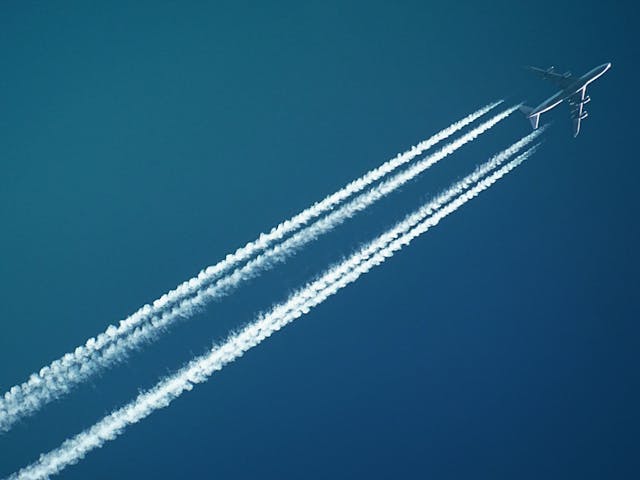


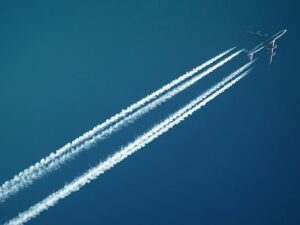
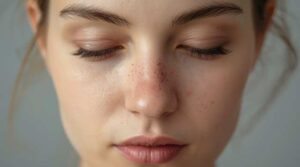

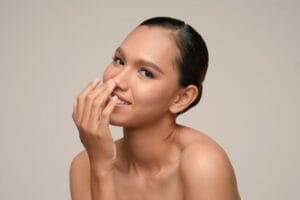

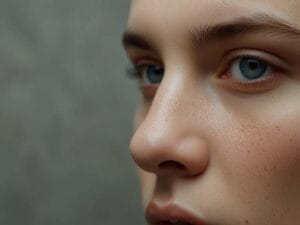
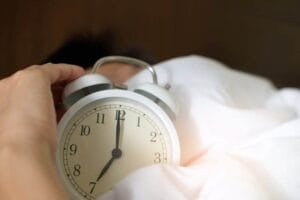
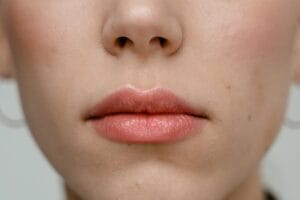
Post Comment